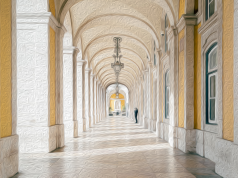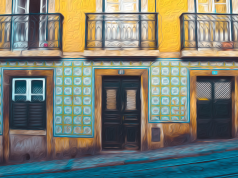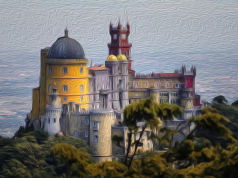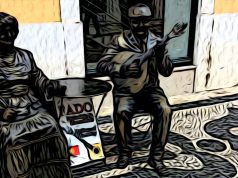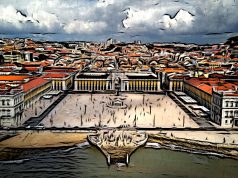Northeast of Eduardo VII Park is the Gulbenkian Museum, one of the world’s great museums and one of Europe’s hidden gems. Part of the Calouste Gulbenkian Foundation, it houses one of the best collections of Ancient & Classical Art in the whole continent. The museum consists of the Founder’s Collection and the Modern housed in separate buildings surrounded by the beautiful Gulbenkian Garden.
History
The over 6,000 pieces, roughly a thousand of them permanently displayed, housed in a 1960’s building (which is renovated in 2001) were the eclectic collection of Armenian oil magnate and multi-millionaire, Calouste Sarkis Gulbenkian (1869-1955). Gulbenkian left one of the world’s finest private art collections, amassed over 40 years, to the museum on his death in Lisbon. The museum is set in its park, which also includes the Modern Art Center, an amphitheater, an art library, auditoriums, and cafes. All the exhibits are labeled both in Portuguese and English.
Eastern & Classical Section
The first circuit exhibits examples of Oriental and Classical Art from Egyptian, Greek, Roman, Mesopotamian, Islamic, Persian, Armenian, and Far-Eastern cultures. Of the many highlights is a haunting gold Egyptian mummy mask, an exquisite 2700-year-old alabaster bowl, a bust of the Pharaoh Senusret III made in obsidian, a series of bronze cats and other priceless treasures in the Egyptian section, an outstanding collection of Hellenic coin, fine Roman statues & a 2400-year-old Attic vase in the Greco-Roman section, rare pieces of Chinese porcelain, Japanese wood prints, Islamic glassware, and rich 16th- and 17th-century Persian tapestries.
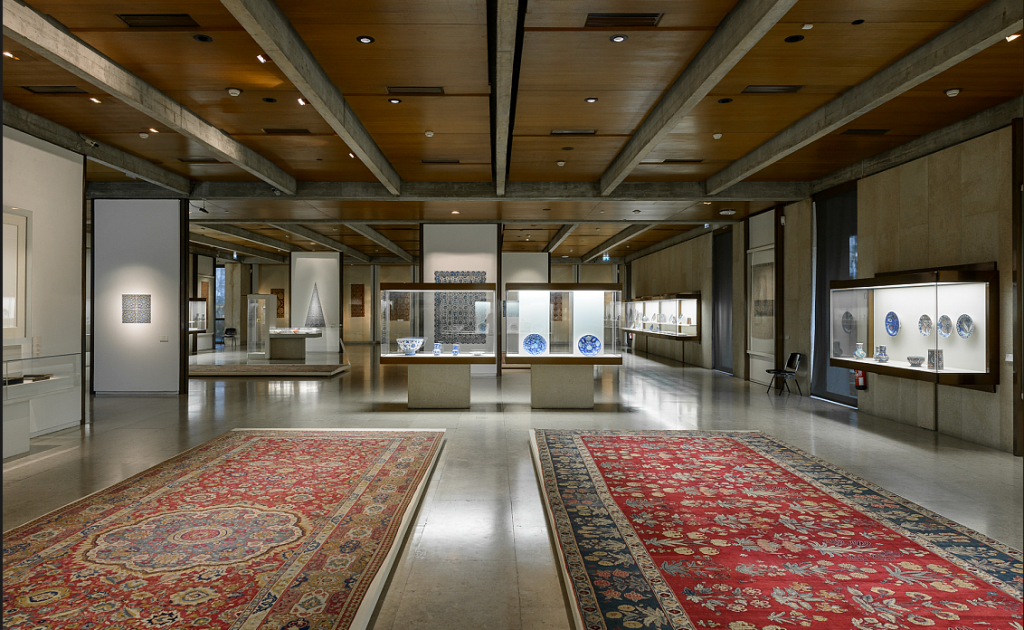
The first circuit exhibits examples of Oriental and Classical Art from Egyptian, Greek, Roman, Mesopotamian, Islamic, Persian, Armenian, and Far-Eastern cultures.
European Section
The second circuit includes European Art with separate sections dedicated to the Art of the Book, Sculpture, Painting and the Decorative Arts – 18th-century French art and Art Nouveau jewels in particular. Considered exceptional, the glasswork of René Lalique is displayed in its room. There are European paintings by many of the masters including Rembrandt, Renoir, Ghirlandaio, Rubens, Manet, Monet, Gainsborough and Turner. Noted European paintings are Rubens’ The Love of Centaurs & Portrait of Helene Fourment, Rembrandt’s Old Man with a Stick & Alexander The Great, Bouveret’s Les Bretonnes au Pardon, Ghirlandaio’s 15th-century Portrait of a girl, Rogier Van der Weyden’s St. Catherine, Renoir’s Portrait of Madame Claude Monet, and Gainsborough’s Wreck of a Transport Ship.
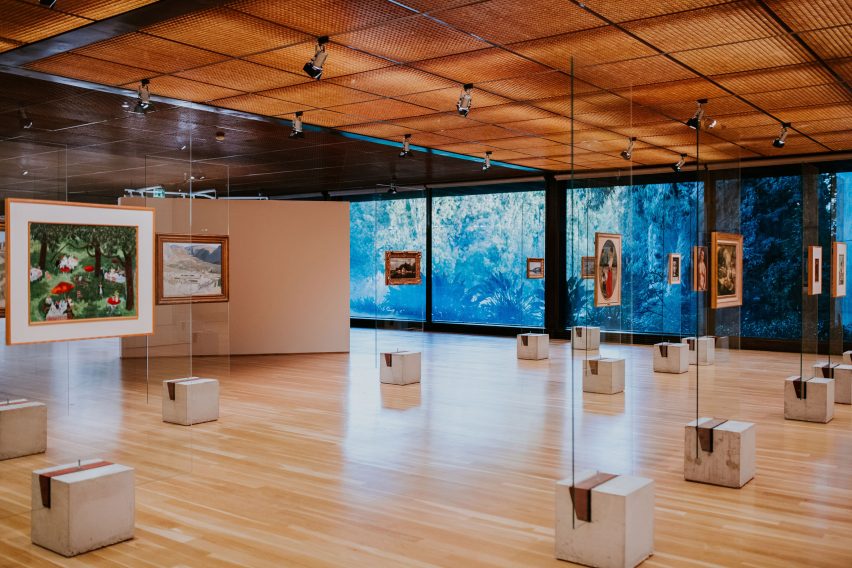
The second circuit includes European Art with separate sections dedicated to the Art of the Book, Sculpture, Painting and the Decorative Arts
The Garden
Wander the beautiful Gulbenkian Garden, which draws scores of workers from nearby offices and shops in fine weather to enjoy its statues, lawns, ponds, and cafes. Leopoldo de Almeida’s statues of Henry Moore and Gulbenkian are worth to see. The laid-back garden, spotted with occasional Portuguese oaks and the rare European yew is the natural habitat of various birds and amphibians like mallards, moorhens, jays, and even hawks.
Modern Collection
Across the garden is the Modern Collection, housed in the José de Azeredo Perdigão Modern Arts Center. There are more than 10,000 items. The collection displays modern European art from the late 19th century to the present. Exhibits include works by José de Almada Negreiros, Paula Rego, Sonia Delaunay, Anthony Gormley, and David Hockney. Photographs by Fernando Lemos, panoramic Lisbon scenes by Carlos Botelho (1899-1982), and the Futurist works of Amadeu de Sousa Cardoso (1887-1918) are also exhibited.
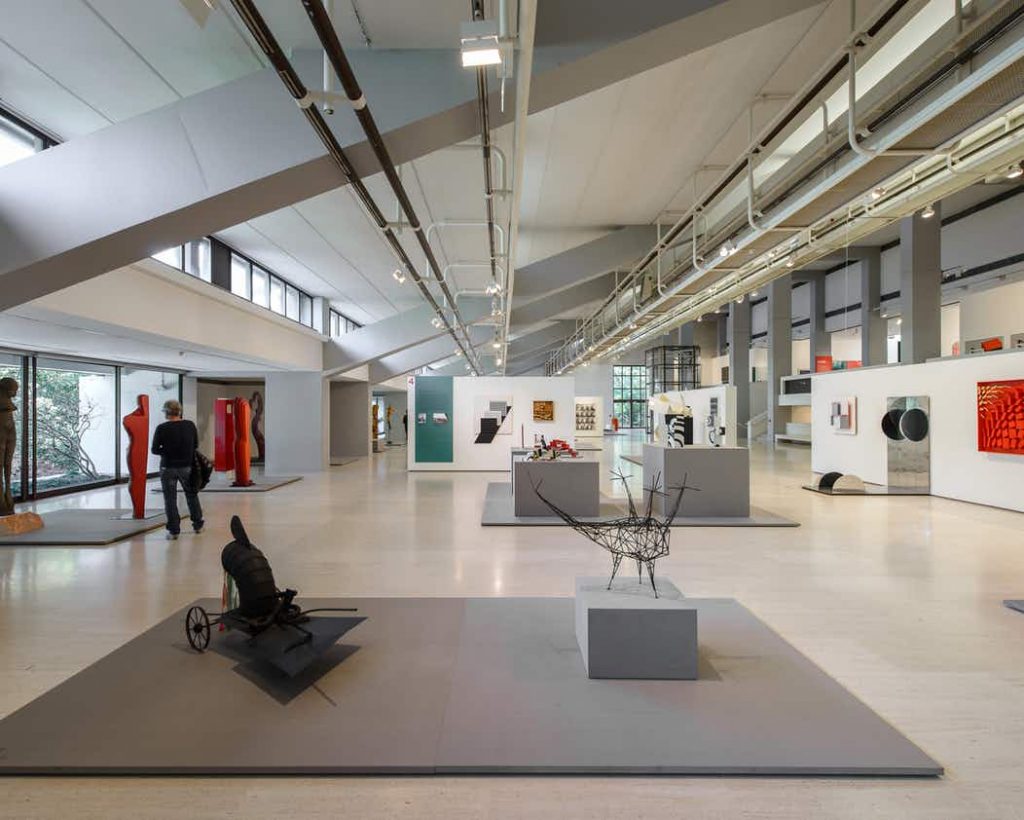
Across the garden is the Modern Collection, housed in the José de Azeredo Perdigão Modern Arts Center. There are more than 10,000 items.
Access
Museu Calouste Gulbenkian (https://gulbenkian.pt/en/)
Avenida de Berna 45A
1067-001 Lisboa
Tel: 21 782 3000
The nearest Lisbon metro stations are São Sebastião or Praça de Espanha, and the bus lines are: #16, #726, #56, #718 or #742.
Hours: Wednesday to Monday: 10 am – 6 pm
Closed on Tuesdays and the following holidays: January 1, Easter Sunday, May 1 and December 25. Free entry on Sundays from 2 pm. All-inclusive ticket is 14 Euros.


